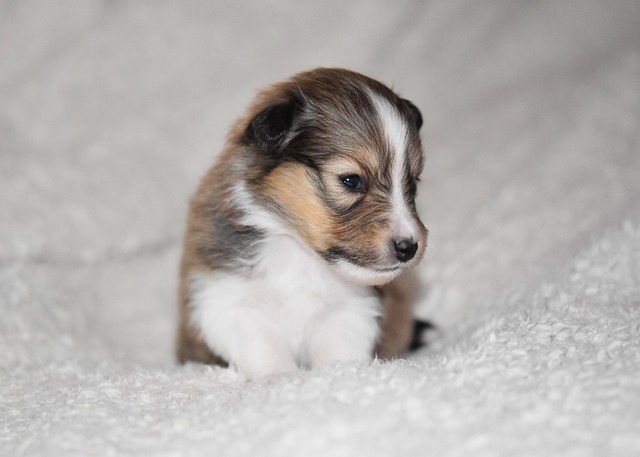
How do i train my dog to be obedient?
Watching your dog dart across the park ignoring your calls isn’t just frustrating—it can put them at risk near busy streets or public spaces.
When we welcome a cute dog and look forward to it growing into a sensible and obedient companion, training becomes an essential part. When is the best time for dog training? This is not only a scientific question, but also full of our deep concern for the growth of dogs. Understanding the different stages of dog growth and seizing the best training opportunities can make our companionship with dogs more harmonious and beautiful.
Puppy period: the golden age for laying a solid foundation
Puppy period is a crucial stage for shaping a dog's personality and developing behavioral habits, generally referring to 3 to 6 months after birth. Dogs during this period are like a blank sheet of paper, full of curiosity about the world, highly capable of learning, and more receptive to new things and commands. Their brains are like sponges, able to quickly absorb various information, making it the golden period for basic training.
Social training is particularly important during the puppy stage. Exposing puppies to different people and animals, unfamiliar environments and sounds can help them build confidence and develop good social skills. For example, taking a puppy to the park and allowing it to interact friendly with other dogs and greet passersby can help it learn how to coexist harmoniously with the outside world and avoid problems such as timidity and aggression when it grows up. Imagine a friendly and lively dog confidently shuttling through a crowd, enthusiastically interacting with everyone, which cannot be separated from good socialization training during its puppy stage.
Basic instruction training should also be carried out at this time. Simple commands such as "sit down," "lie down," and "come over" are easier for puppies to understand and master. During training, utilize the puppy's craving for food and use small snacks as rewards to guide them to make correct movements. For example, when training to "sit down", place snacks in front of the puppy's nose and slowly move upwards. Its body will naturally squat down, and at this time, issue the "sit down" command in a timely manner, and give snacks and praise. Through repeated practice, puppies can establish a connection between instructions and actions, forming conditioned reflexes.
Adolescence: Strengthening Training and Correcting Bad Behavior
The sub adult stage is usually from 6 months to 1.5 years old, during which the dog's body is still developing and their mind is gradually maturing. At this point, they have a certain memory of their previous basic training, which can further strengthen these skills, improve the accuracy and obedience of their movements.
For example, dogs that have previously learned to "sit down" can increase the difficulty of instructions in their sub adult stage, such as being able to quickly follow instructions and sit down in different environments and disturbances. You can also start some more challenging training, such as "wait" commands, to teach the dog to wait quietly in place until the owner issues a new command. This not only exercises the dog's self-discipline, but also deepens its understanding with its owner.

At the same time, adolescence is also a good time to correct bad behavior in dogs. If a dog develops some bad habits during its puppy stage, such as biting furniture or pouncing on people, they can be corrected through proper guidance and training at this stage. For example, when a dog bites furniture, it sprays bitter spray on the furniture. When it bites again, it will taste bitter, and gradually change the habit.
Adults: Consolidating skills and personalized training
After one and a half years old, dogs basically enter adulthood. At this point, their bodies and minds have matured, and the previously trained skills need to be constantly consolidated to prevent forgetting. Regular review and training of basic commands can be conducted to maintain the dog's sensitivity to instructions.
Adult dogs can also receive personalized training based on their own characteristics and the needs of their owners. If a dog is energetic and has strong athletic abilities, it can be trained to play sports such as frisbee and agility disorders; If a dog has a gentle and quiet personality, it can be trained to become a healing dog to accompany those in need of care. This personalized training not only allows dogs to leverage their strengths, but also makes their lives more fulfilling and meaningful.
No matter which stage the dog is in, training requires the owner's patience, love, and scientific methods. In the puppy stage, we guide them to explore the world with love; During adolescence, help them correct their shortcomings and continue to grow; In adulthood, tap into their potential and let them shine with unique brilliance.

Watching your dog dart across the park ignoring your calls isn’t just frustrating—it can put them at risk near busy streets or public spaces.

New puppy owners often find themselves rushing to clean up accidents before they set in, and that’s where puppy pad training becomes a game-changer.

If you've noticed your dog's waistline disappearing and your veterinarian has mentioned those few extra pounds, your first instinct might be to simply reduce the amount of food in their bowl.

Training a dog to use a designated spot indoors isn’t as daunting as many new owners fear, but it does take consistency and an understanding of your pet’s needs.

That moment of dread on a walk is all too familiar for many new dog owners. You see another dog approaching down the sidewalk of your neighborhood

If the sight of another dog on your neighborhood walk makes your heart sink as your own dog erupts into a frenzy of barking and lunging, you're not alone.